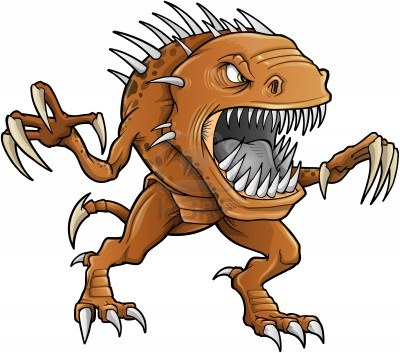
image via 123rf.com
Wondering why your business’ Facebook page is getting limited love? It just might be getting eaten by EdgeRank. No, not a mythical beast, but an algorithm.
Follow me for a sec.
The first thing people see when they log into Facebook is the news feed. Each post is a potential news feed story. Facebook calls these posts ‘Edges’.
It would be completely overwhelming if all updates of all your friends and fan pages appeared on your news feed. Facebook, therefore, employs an algorithm ‘EdgeRank’ to predict how relevant and interesting each post is to specific users. The algorithm filters users’ news feeds such that only top-ranked stories show up. If you’re wondering where certain people in your Facebook circle have disappeared to, they probably have been eaten by EdgeRank!
Components of the EdgeRank Algorithm
There are three main components to the EdgeRank algorithm: Affinity, Weight, and Time Decay.
Affinity: The affinity score assesses how connected a particular user is to the Edge. Affinity is calculated by the amount of interaction between two Facebook users. Facebook calculates the affinity score by analyzing actions users take and the strength of specific action. This means the more fans interact with your content, the more likely your page will show up in their news feed.
Weight: Weight represents the ways your fans are responding to your content such as clicks, shares, likes or comments. By default, you are more likely to see a story on which there has been a comment than one which has a like. In the world of EdgeRank, a share carries more weight than a comment, a comment more than a like, and a like more than a click. Talk about strata!
Time Decay: EdgeRank is ageist! The older a story gets, the lower is scores.
Reach and the Edgerank Monster
Facebook uses four factors to determine the ‘reach’ each page post gets. Here, ‘reach’ refers to the number of your Facebook fans who see your posts in their news feed.
These 4 factors are:
Interaction: If you like every post by a page that Facebook shows you, it will show more listings from that page on your news feed.
Reaction: If people on Facebook that are shown a particular post ignore it, the post is less likely to show on your news feed.
Past interactions: If you have interacted with posts of the same type in the past, there is a better chance you will see posts by that page.
Complaints: If a post has received complaints by other users who have seen it, you will be less likely to see that post.
Just as Google makes changes to its algorithm PageRank, Facebook often makes changes to its news feed algorithm, EdgeRank to increase engagement and general satisfaction.
How to optimize your page for EdgeRank
Once you understand Facebook’s algorithm, you can optimize your fan page to improve your engagement with your fans. Here are a few tips:
Post quality content: Try to think from your fans’ perspective and accordingly post questions, photos, videos and share other’s posts. Check your insights and analytics to see how your fans respond your content. If required, rework your strategy.
Post consistently: It is important to keep your Facebook active. It is hard to recommend post frequency (as so much in life is variable) so try out different strategies and check out what works. Don’t let your page turn into a festering sore that gets no love (or updates).
Post at the right time: Think of what times your audience would be using Facebook and post accordingly. Studies have shown that mid-morning is the best time but keep in mind that that every business has a different audience.
Here’s hoping you slay the EdgeRank Monster
